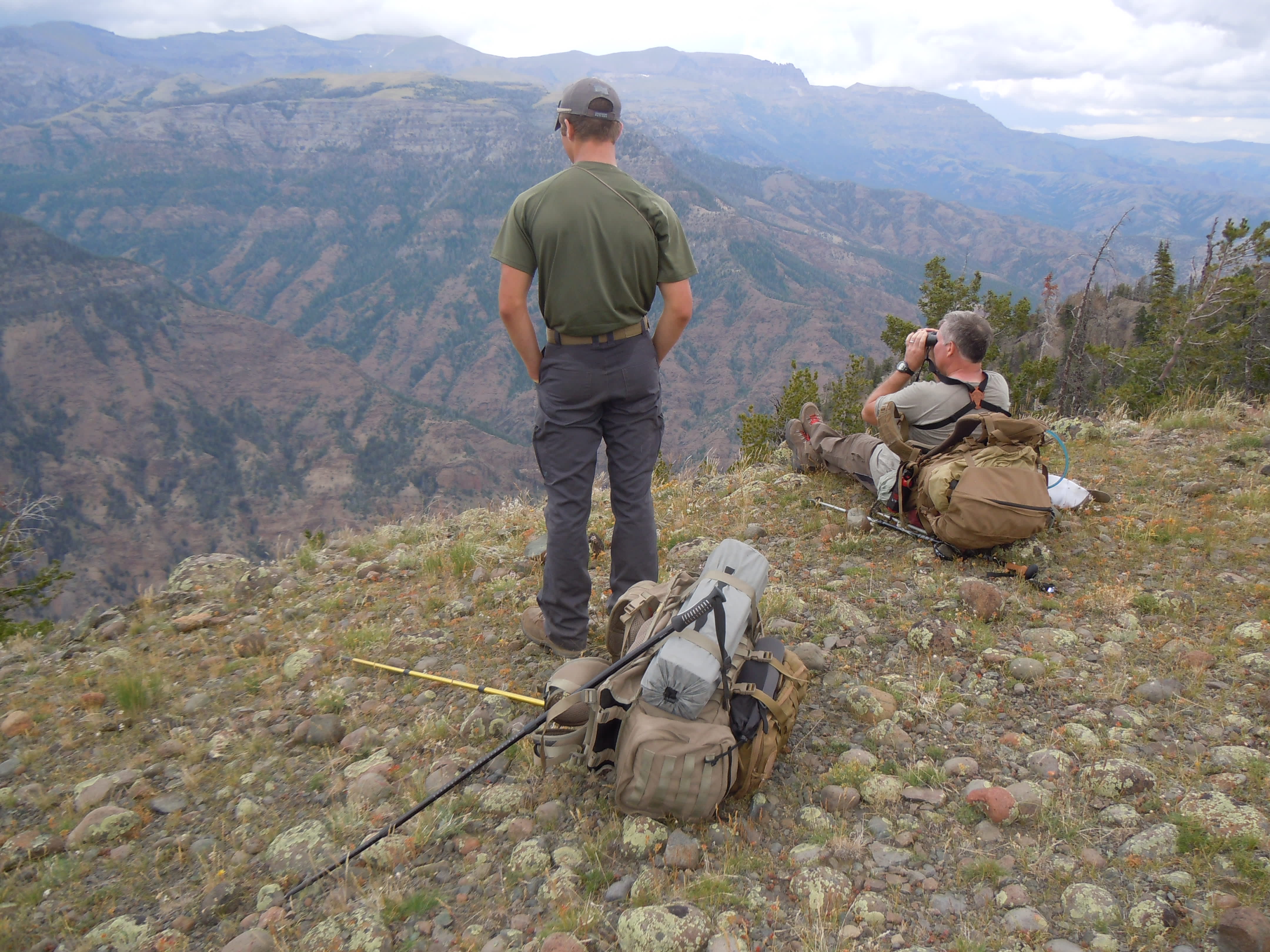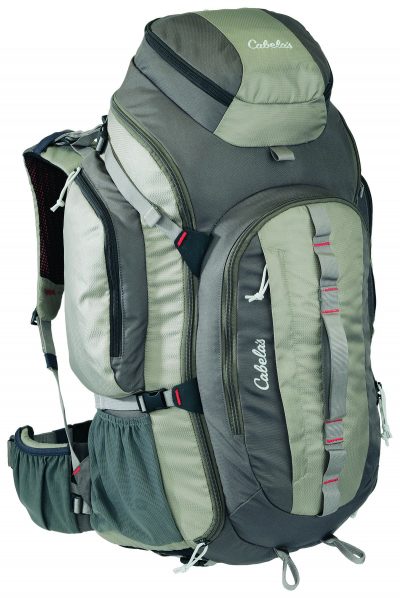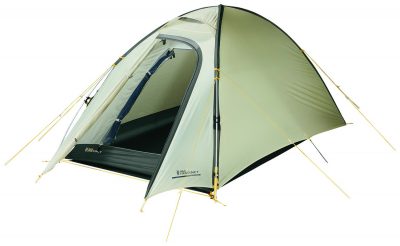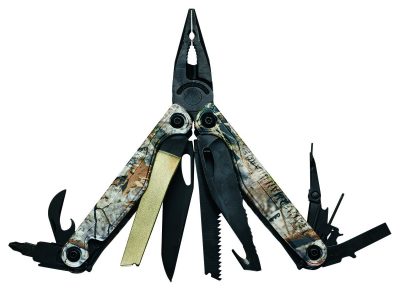Build the Modern Bugout Bag
OutdoorHub Staff 07.28.16

Are you prepared to leave your home in case of an earthquake, hurricane, riots, house fire or even today’s headline-grabbing terrorism events? Be ready for any emergency departure by assembling a bugout bag and having it within arm’s length. Sporting goods outlets such as Cabela’s offer a variety of supplies to outfit your bugout needs. Backcountry hunters, anglers and campers utilize the same goods to stay alive when civilization is beyond the horizon.
The Purpose
A bugout bag contains all the items required to keep you fed, watered, clothed, sheltered and secured in case of any emergency. It’s not a survival bag to sustain you for months on end, but it should have enough resources to keep you comfortable for 3 days or more. Each family member requires a bag, and although you might not need to duplicate tents or water purifiers, other essentials are nonnegotiable. Duplicated items include individual food, raingear, and other personal items.

The Bugout Bag
All items need to fit in a standard style backpack. You can outfit yourself with specialized bugout bags like those manufactured by Sandpiper of California, shop the Cabela’s Endicott series (above), or even consider a comfortable dry bag with shoulder and waist straps. Make sure your bag has a rain cover to ensure dryness. As you consider the style and size of your bag, keep in mind standard backpacking weight suggestions.
Most experts emphasize that overall pack weight should be no more than 25 percent of your body weight. For a person weighing 200 pounds, that equals 50 pounds. If you’ve never lugged 50 pounds of weight on your back, try it. You’ll be striving to save every extra ounce possible after the experience.
Before you type in the numbers from your Visa card for your bugout bag, review suggested bugout items. Purchase, acquire and assemble the roster of requirements. After you have that pile of gear in front of you, it will point you to the size bugout bag you’ll need.
The Contents
Stay focused on the basics before you begin chasing hotel amenity items. Think shelter, food, water and basic survival. Clothing can fall under shelter, and in addition to the hiking clothing you wear, bring along raingear and at least one pair of hiking socks. Boots should be rugged enough for long-distance hiking in any terrain. Clothing should be poly-based for quick drying. Pants should include cargo pockets and zip-off pant legs. Shirts should have a collar and long sleeved. A broad-brimmed hat for sun and rain protection is advised, along with leather gloves for camp chores. Temperature extremes will command outer layers. Combine these clothing elements with a mesh head net and you have insect protection in addition to a clothing-based sunscreen.

Shelter from the elements can come in the form of two lightweight tarps and a supply of paracord to lash down the tarps for shelter. You can also substitute tarps for backpacking tents such as the Cabela’s Instinct 2-person dome tent (above). Nevertheless, extra tarps come in handy in camp settings and are lightweight additions to those not packing a tent.

Bugout companies manufacture foods that resist deterioration in heat or cold, but in most instances you can rely on freeze-dried varieties such as Mountain House. Pack enough calories for each member for 3 days or more in each bugout bag.

Individuals should also have Nalgene-style water bottles filled, two minimum per person, along with ways to filter water. Purification tablets, unscented chlorine or better yet, a Katadyn-style water filter can make any water source safe to drink with treatment.
One person should keep a fire-starting source such as a magnesium firestarter along with wooden kitchen matches and kindle in a waterproof package for backup. Dryer lint works great for starting fires, as does cotton balls soaked in petroleum jelly. Both are lightweight and ignite quickly.

For basic tools nothing beats a multi-tool such as Leatherman Charge TTi (above). You may also want a straight, fixed-blade knife for protection or even wild game preparation. Speaking of personal protection, you will want to consider a sidearm, and depending on the state of civility, a rifle. Personal preferences come into play here, but a 9mm semiautomatic handgun and an AR-style rifle in .223 Rem. should be top considerations for defense, and hunting.

Communication systems may break down, but bring your smartphone, a charger and even a backcountry, foldable solar charging system. Your smartphone can help you with navigation, mapping and locating loved ones after systems resume.
Additional bugout items are listed below. Consider the scenarios and add or subtract items per your bugout possibilities. Regardless of the extremes you visualize, be prepared with a bugout bag for you and every member of your family.

Mandatory Bugout Items Checklist (browse categories here)
- Pack
- Wilderness-style clothing, gloves, hat, mosquito head net
- Lightweight food supply, 3-day or more supply, eating utensils
- Camp Chef or Jetboil heat source for food preparation, extra stove fuel
- Water in water bottles and water purification system
- Firestarter, magnesium or homemade, in waterproof container
- Tarps (two) or backpacking tents
- Paracord, one package along with a parabracelet for each member
- Survival blanket or lightweight mummy-style sleeping bag, light sleeping pad
- Hand or body warmers for nighttime heat in sleeping bag
- First aid kit, required medications
- Extra hiking socks
- Raingear
- Personal toiletries (think carry-on bag)
- Extra glasses or contacts
- LED flashlight along with two sets of extra batteries
- Hand crank radio or battery operated, extra batteries
- Multi-tool and fixed-blade knife
- Lightweight knife sharpener
- Handgun and/or rifle depending on situation, extra ammunition
- Solar-powered or windup watch
- Camp soap and camping towel
- Personal hygiene body wipes, can also double for TP
- Collapsible bucket or bowl for cleanup
- Compass and map
- Strips of duct tape for repairs and blisters
- Large plastic garbage bags
- State identification such as a driver’s license
Optional Items Checklist
- Folding camp shovel
- Folding camp saw
- Axe or hatchet
- Small binocular
- Backcountry cooking utensils
- Aluminum foil
- Collapsible fishing pole and tackle
- Copy of your birth certificate, passport, property deeds, medical records, insurance policies
- Pencil and paper
- Sewing kit
- Copy of the Constitution
- Holy Bible
- Antibiotics
- Garden seeds in case you don’t return
- Extra money or precious metals
This article was produced in cooperation with Cabela’s

